Food photography is like creating art, and your backdrop is the canvas that brings the picture to life. A perfect backdrop can make your food look more delicious, stand out, and tell a story. Picking one means considering material, color, texture, and size. Let’s explore how to choose the ideal one!
A great backdrop doesn’t just sit in the background it enhances the whole photo. It sets the mood, draws attention to details, and makes the image more visually appealing. Choosing the right one can turn an ordinary photo into something extraordinary.
Why Backdrops Matter in Food Photography
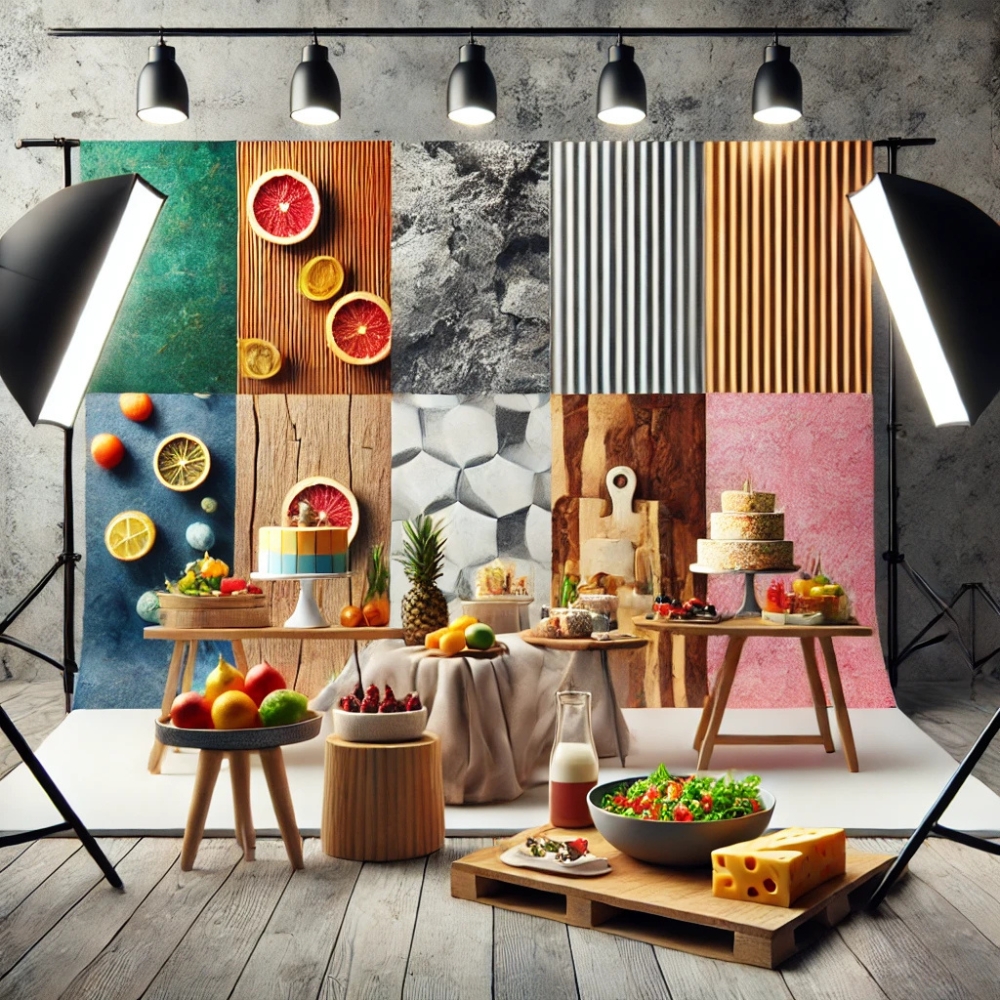
Backdrops do more than fill empty space; they’re the stage where your food becomes the star. Whether you’re showcasing a bright fruit salad or a decadent chocolate cake, the backdrop sets the scene. Wooden backdrops can give your photos a warm, rustic vibe, while vinyl ones are practical and easy to handle.
A carefully chosen backdrop adds personality to your photos. Concrete backdrops can feel modern and sleek, while darker ones make desserts and fancy dishes pop. The right backdrop makes your food’s colors and textures shine, creating a visual feast.
Professionals like Barbara Hobart from Best Ever Backdrops know the importance of quality surfaces. Barbara specializes in Food Photography Backdrops and her collection shows how the perfect backdrop can elevate a simple food photo to professional standards. Check out her designs for inspiration.
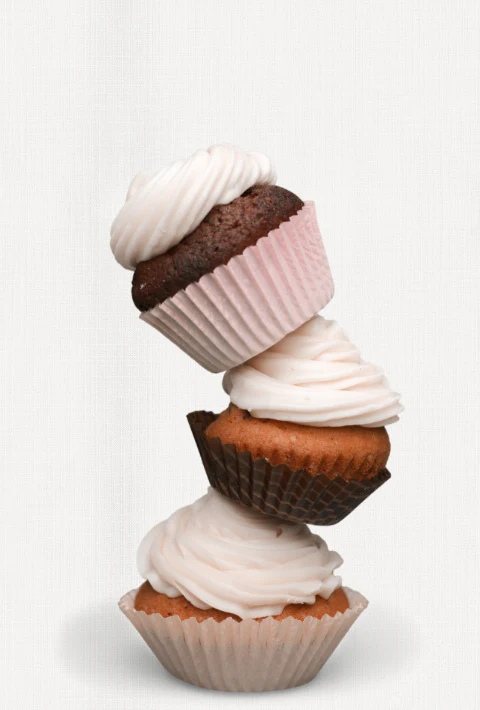
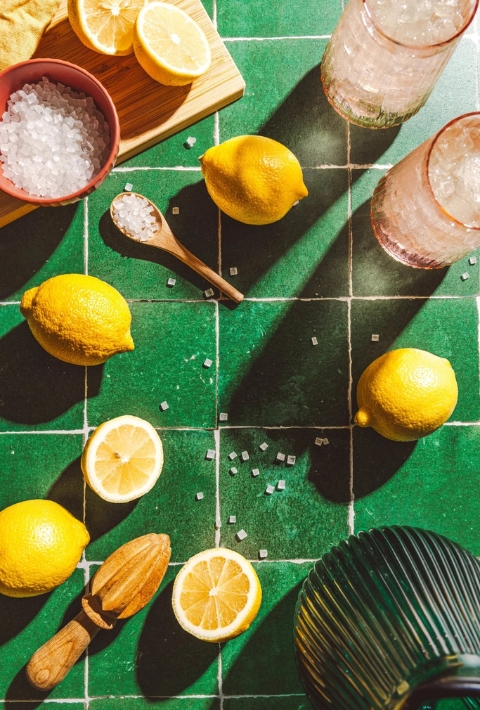
Vinyl vs. Wood
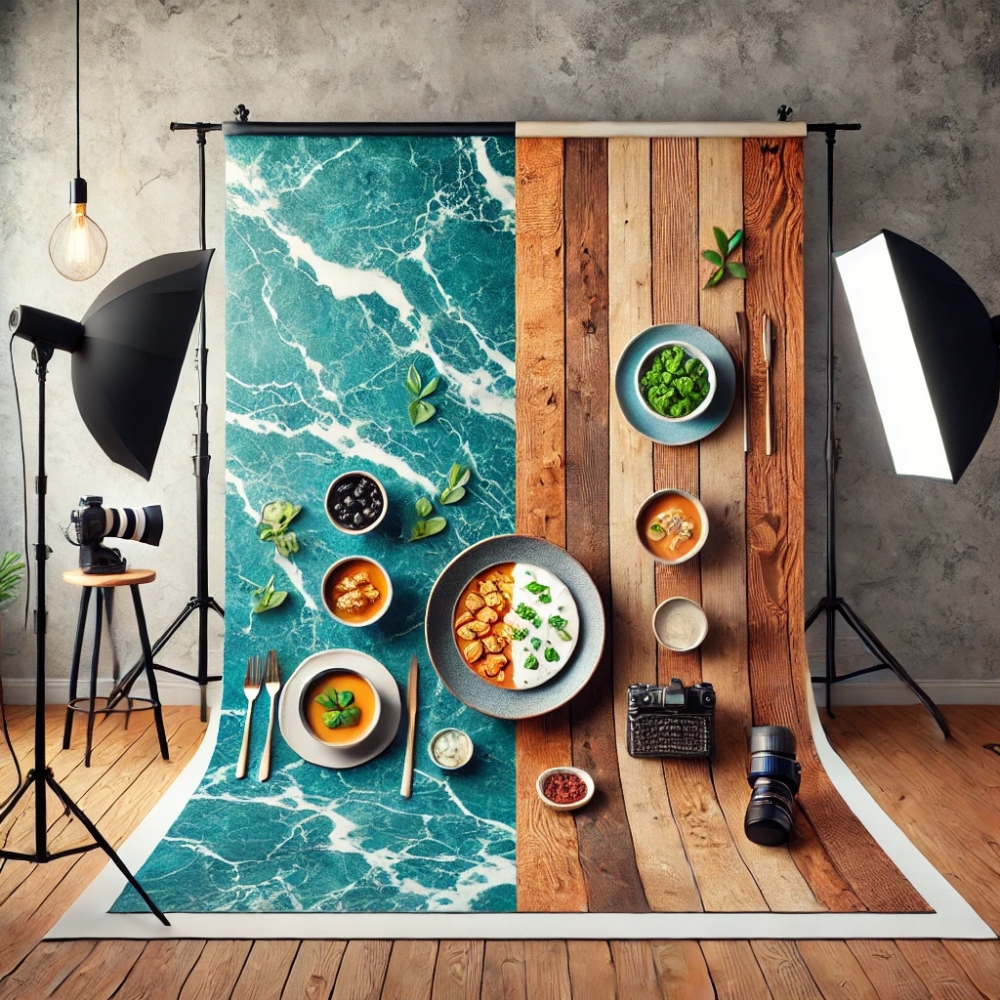
Vinyl Backdrops
Vinyl backdrops are lightweight, portable, and affordable. Sharon from Whiskfully So recommends high-quality vinyl, like those from Capture by Lucy, for their realistic textures and professional look. However, steer clear of poorly printed vinyl that can make photos look fake.
Vinyl is perfect for beginners or on-the-go photographers. It’s easy to clean and comes in a variety of styles, from marble to rustic wood patterns, allowing you to experiment without breaking the bank.
Wooden Backdrops
Wooden backdrops are heavier but offer unmatched authenticity. They bring depth and texture to your shots, making them ideal for rustic scenes featuring bread, cheese, or seasonal dishes. Their durability makes them a long-term investment for serious photographers.
For a cozy, natural feel, wooden backdrops are a fantastic choice. Their unique imperfections and textures make every photo feel genuine and inviting.
What to Consider When Choosing a Backdrop
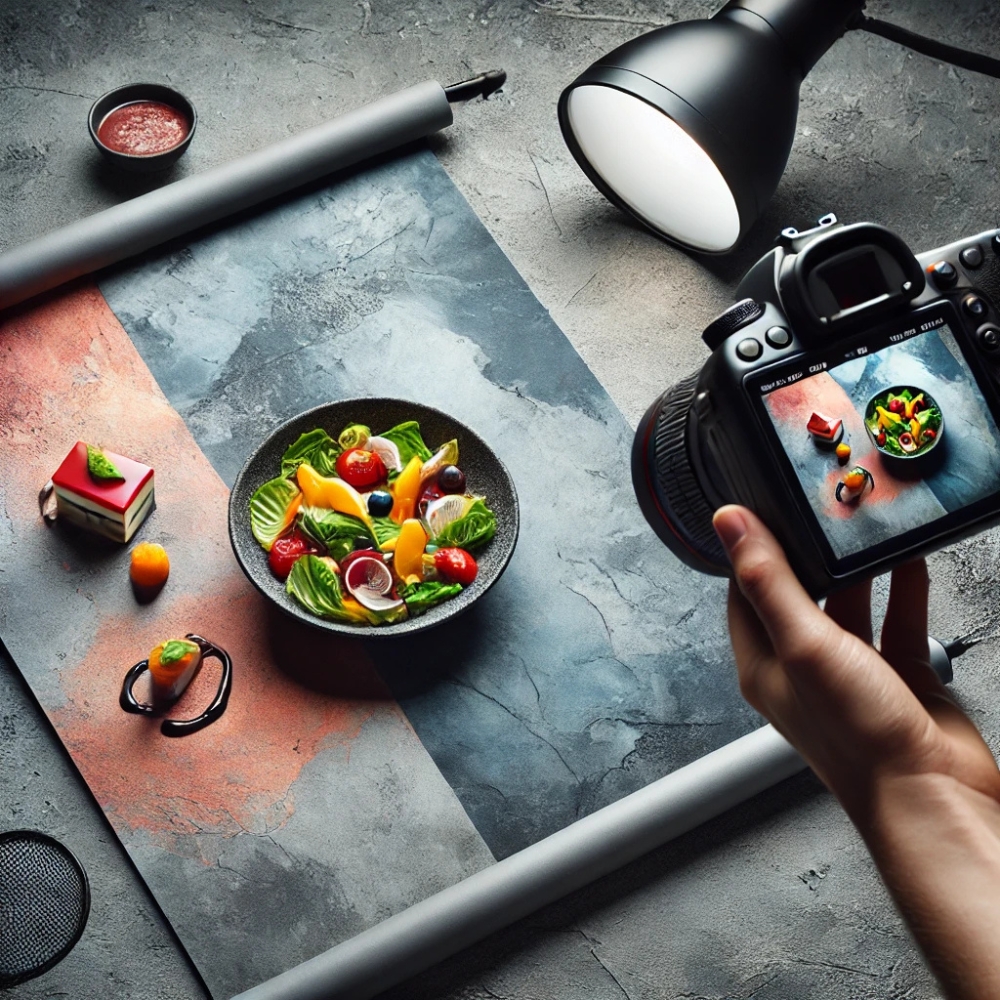
Texture
Texture adds depth and dimension to your photos. Rachel Korinek from Two Loves Studio emphasizes using subtle textures, like woodgrain or concrete, to make pictures more interesting without distracting from the food. If your dish is colorful, a smooth backdrop can help keep the focus on the food.
Textures can also set the mood. Cracked or weathered surfaces give a vintage feel, while smooth and glossy backdrops feel modern and fresh. Experiment with different textures to find what suits your style best.
Color
Colors play a big role in food photography. Neutral shades like white, gray, and beige are versatile and complement most dishes. If you’re feeling adventurous, try deep blues, warm oranges, or pastel tones to match the vibe of your food.
Think about contrast too. Light foods look great on dark backdrops, while vibrant dishes pop on muted tones. The goal is to make your food the star of the shot, so choose colors that enhance its natural beauty.
Size
The size of your backdrop depends on the type of photo you’re taking. Smaller backdrops (2’x3’) work well for close-ups, while larger ones (3’x4’ or more) are perfect for table spreads or lifestyle scenes. Having a variety of sizes gives you flexibility for different projects.
Durability
Durability is key, especially for messy shoots. Waterproof and stain-resistant backdrops are lifesavers when dealing with liquids or sauces. Wooden backdrops need to be stored in dry places to avoid warping, while vinyl backdrops are easy to roll up and store.
DIY Backdrops
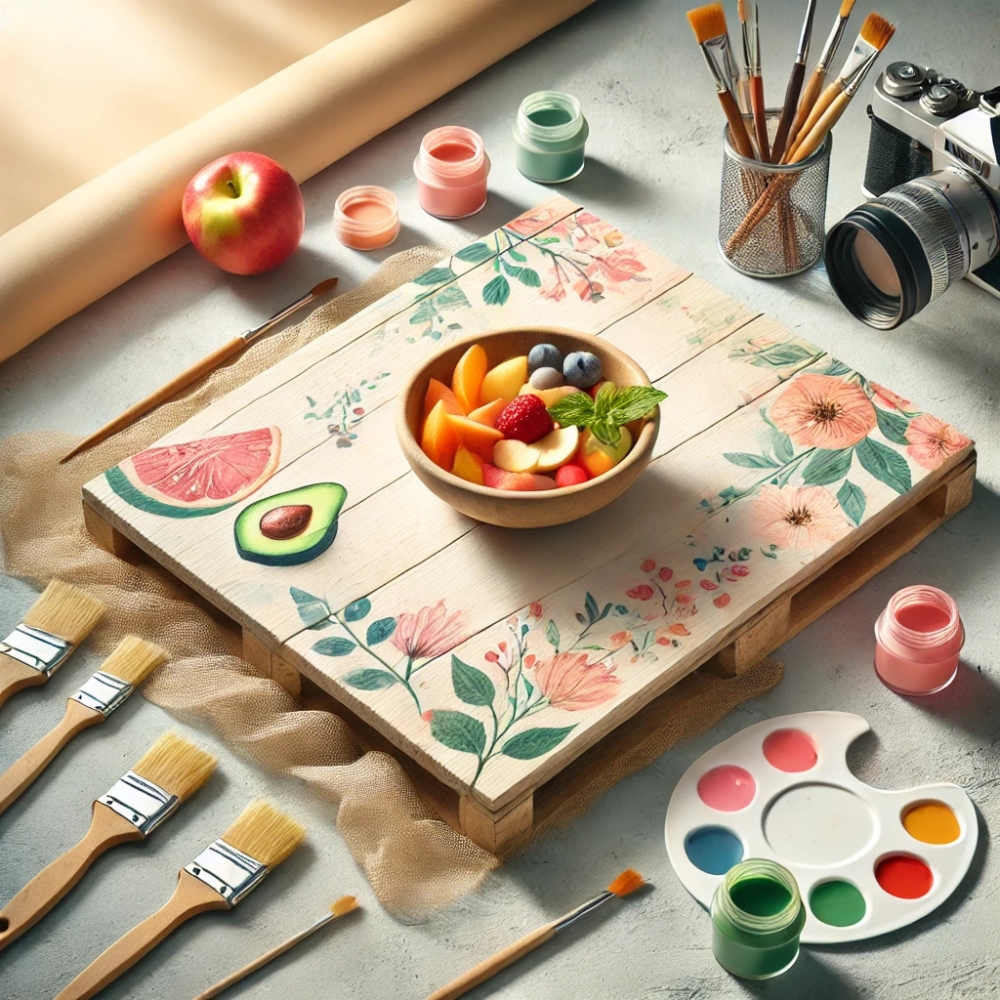
Making your own backdrops is a fun and budget-friendly way to expand your collection. Joanie Simon from The Bite Shot suggests using MDF boards with matte paint for a professional look. You can also try plaster, burlap, or chalk paint to create unique textures and designs.
DIY backdrops let you customize your photography to match your personal style. Want a weathered wood effect? Go for it. Need a bold, colorful background? You can create that too. Plus, DIY backdrops add a personal touch to your work.
Pro Tip: Always test your DIY backdrops in different lighting conditions to ensure they look great before using them in a shoot.
Building a Backdrop Collection
Start small with a few versatile backdrops that suit a range of food styles. Double-sided backdrops are an excellent choice because they save space and provide more options. Over time, expand your collection as your photography style evolves.
Consider investing in backdrops with multiple textures or colors to create different looks without needing too many items. This approach keeps your workspace organized while maximizing creative possibilities.
Caring for Your Backdrops
Proper care extends the life of your backdrops. Clean vinyl backdrops with a damp cloth and store them rolled up to prevent wrinkles. Wooden backdrops should be kept in dry areas to avoid damage. For DIY backdrops, seal them with a matte spray to protect against scratches and stains.
Taking care of your backdrops ensures they stay in great shape, ready for every project.
Elevate Your Photography with the Right Backdrop
The perfect food photography backdrop can transform your pictures from ordinary to extraordinary. Whether you choose to buy one or make your own, the backdrop helps tell the story of your dish and brings it to life.
Professionals like Barbara Hobart demonstrate how a carefully selected backdrop can enhance any food photo. No matter your skill level, investing time and effort into choosing or creating the right backdrops is always worth it. With the right tools, you can create beautiful, mouthwatering photos that grab attention and inspire.
So, get creative, experiment with different options, and let your food photography shine. Happy shooting!